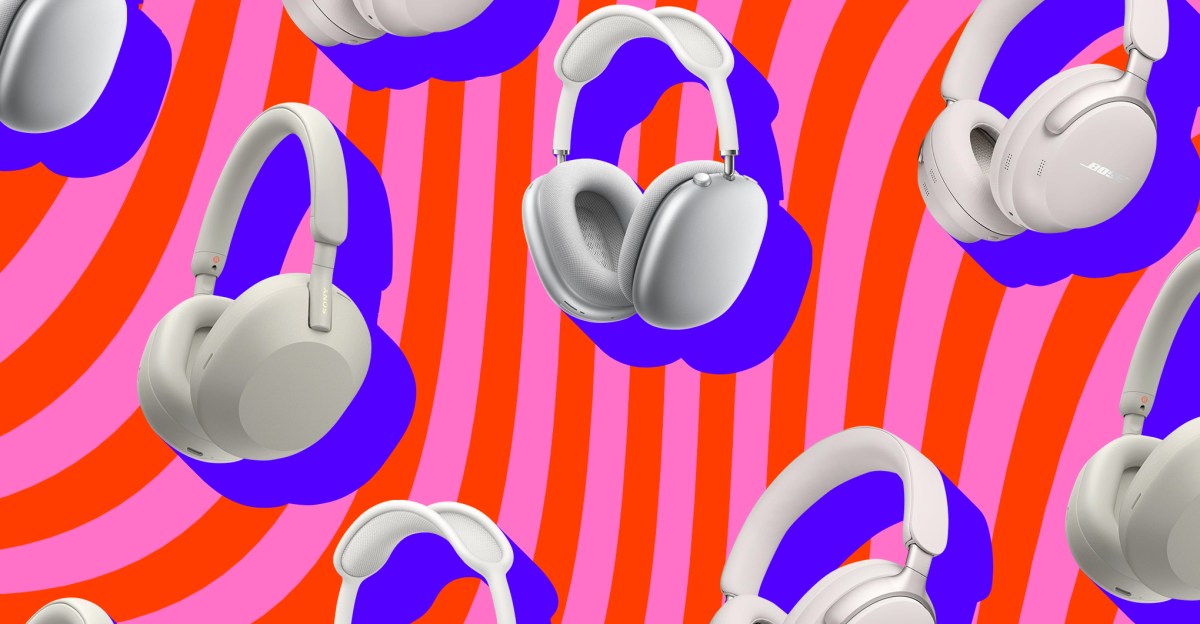
Whether you’re wearing them for the morning commute, while traveling, or if you’re simply trying to find some peace and quiet while working at home, noise-canceling headphones are a more essential piece of kit nowadays than ever before. And you’ve got a slew of great options to pick from; it’s hard to make a bad choice.
There are longtime heavyweights like Bose and Sony to pick from. Apple has quickly carved into the market with the luxurious AirPods Max. And if you’ve got an ear that demands the best audio quality, headphones from Bowers & Wilkins and Sennheiser might appeal to you more than the mainstream contenders.
Not everyone loves the feel of earbuds, and there are scenarios where over-ear and on-ear headphones are just simpler or make more sense than wireless buds — particularly if lengthy battery life matters to you.
No matter how you’re using them, the criteria for picking the best noise-canceling headphones haven’t changed.
How we test noise-canceling headphones
We put our top picks for noise-canceling headphones through many hours of testing. Since their ability to tamp down the loudness of your surroundings is critical, we use them in a variety of environments — including busy city streets, the office, coffee shops, and public transit — and for more quiet, focused listening at home.
We sample their transparency mode to see how clearly the outside world comes through and if it’s easy to carry on conversations while wearing the headphones. We have friends and family try them on and provide feedback on the fit and comfort. And, of course, we have our favorite albums and playlists on repeat to assess how each pair sounds and how much listening time you can expect from a single charge.
Comfort
If headphones are causing a sore spot at the top of your noggin, what good are they no matter how good they sound or cancel noise? Traditionally the lighter they are, the more comfortable headphones will prove over extended listening sessions. But manufacturers can also help improve comfort by being thoughtful in the materials they choose for ear cups and the headband that wraps over your cranium. Clamping force is another important factor; some headphones will squeeze against your head firmer than others; this can be great if you want a pair to stay put for exercise, but not ideal if you’re just trying to relax and tune out the world.
Noise cancellation
Practically any of our picks will do an excellent job at providing distraction-free listening when on a flight, at the office, or if you’re traversing city streets. Noise-canceling headphones work by using built-in microphones to listen to the sounds in your environment, and they invert those soundwaves to eliminate the cacophony of everyday life.
Sound quality
Having powerful noise-canceling used to mean compromising on sound quality, but that’s simply not the case anymore. Most of today’s flagship ANC headphones provide dynamic, rich, and immersive sound. They support a variety of Bluetooth audio codecs, and some (like Sony’s LDAC and aptX HD) can deliver higher bitrates than the status quo AAC and SBC codecs. But don’t get bogged down in those details; headphones that are tuned well with the right components can make your music sound fantastic regardless of codecs.
Battery life
One benefit of buying headphones instead of earbuds is that they can last much longer on a single charge. Whereas you’ll need to plop most earbuds back into their case after five hours or so, wireless headphones can keep the music going for around 20 hours. And some recent models can even exceed that and hit 40 hours.
Multipoint pairing
We all try to do our best at multitasking, and multipoint Bluetooth connectivity is essential for headphones to meet the same challenge. Multipoint allows your noise-canceling headphones to pair with two devices at the same time. This makes it easy to take a call on your phone and get right back to the music you were playing on your laptop without fussing with Bluetooth settings menus.
Bonus features
Headphones are increasingly gaining features that are exclusive to individual manufacturer ecosystems. For example, the AirPods Max are capable of head-tracking spatial audio and other tricks like audio sharing — but only if you’re listening to them with one of the company’s other products, like an iPhone, Mac, or iPad.
The “best” headphones for you will differ based on which of those factors you prioritize and care about most, but our overall pick for the best noise-canceling headphones remains ****Sony’s WH-1000XM5. They offer a combination of sound quality, comfort, and great noise cancellation that’s hard to beat.
- The best wireless headphones for most people
- The best noise-canceling headphones for travel
- The best wireless headphones for iPhone owners
- The best-sounding wireless headphones
- The noise-canceling headphones with the best battery life
The best wireless headphones for most people
Battery life: 30 hours / Multipoint: Yes / Audio codecs: LDAC, AAC, SBC Connectors : USB-C (charging), 3.5mm headphone jack (audio)
Sony’s WH-1000XM5 have a completely different design from their predecessors. The changes result in greater comfort when you’re wearing them on your head for extended periods of time — like on a flight or if you’re at the office.
Noise cancellation has been further improved from the already-stellar performance of the M4, putting Sony at the front of the pack compared to all major competitors. Sound quality is more detailed and balanced than the older 1000XM4; the low end is still punchy but tighter and less boomy than before. The M5 offer the best voice call performance in the 1000X series to date, and they can connect to two devices simultaneously, so you can stay clued in on what’s happening on your phone when you’re working away on your laptop or tablet.

Sony’s headphones also include unique features like “speak to chat,” which automatically pauses your music and pipes in ambient audio whenever you start talking. Or you can hold one hand over the right ear cup to activate quick attention mode, which is convenient when grabbing a coffee or listening to airport announcements. And like other high-end headphones, the 1000XM5 can detect when they’ve been removed from your ears for auto-pause.
The main downside of the WH-1000XM5 is that, at $399.99, they’re more expensive than prior models. That’s a big reason to consider the 1000XM4, which were our previous pick for the best noise-canceling headphones. They remain part of Sony’s lineup and can often be found on sale.
Read my full Sony WH-1000XM5 review.
The best noise-canceling headphones for travel
Battery life: 24 hours / Multipoint: Yes / Audio codecs: aptX Adaptive, AAC, SBC Connectors : USB-C (charging), 2.5mm headphone jack (audio)
Bose’s QuietComfort Ultra Headphones are basically a blend of the company’s prior Noise Canceling Headphones 700 and QuietComfort 45 that borrow the best traits from both — while throwing in a new “immersive audio” listening mode. Like past Bose cans, they’re very light and comfortable on your head, even when worn for long stretches of time. Best of all, unlike the Noise Canceling Headphones 700, these can be folded to make them easier to travel with.
Their 24-hour battery life is more than adequate, and Bose has added support for the aptX Adaptive Bluetooth codec for improved audio fidelity on Android devices.

The immersive audio feature works well on some songs, but less so on others. It’s worth experimenting with, but even if you leave it off entirely, you’re left with best-in-class noise cancellation, pleasing sound, and a helpful “aware” transparency mode.
Read my full Bose QC Ultra Headphones review.
The best wireless headphones for iPhone owners
Battery life: 20 hours / Multipoint: No / Audio codecs: AAC, SBC Connectors : Lightning (audio and charging)
There was definitely some sticker shock when Apple introduced a $549 set of noise-canceling headphones in 2020. The AirPods Max cost significantly more money than any of our other recommendations. But Apple’s build quality is on another level: these trade the plastic you’ll find in many noise-canceling headphones for steel and aluminum, and the ear cups are a breathable mesh fabric. They’re hefty headphones, there’s no denying that. But aside from Apple refusing to include a headphone cable in the box, there’s nothing about the AirPods Max that feels cheap. And I appreciate the simplicity of using the digital crown for controls instead of relying on hit-or-miss gestures like taps and swipes.
[Content truncated due to length…]
From The Verge via this RSS feed


